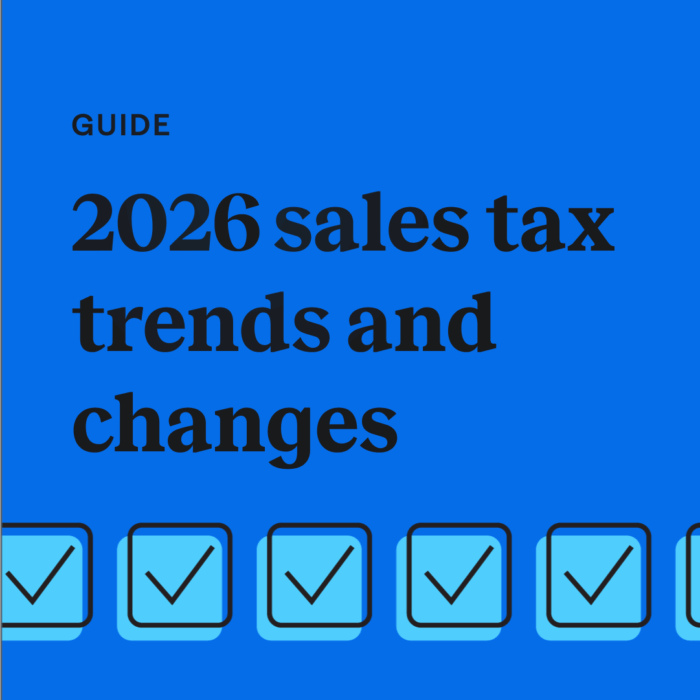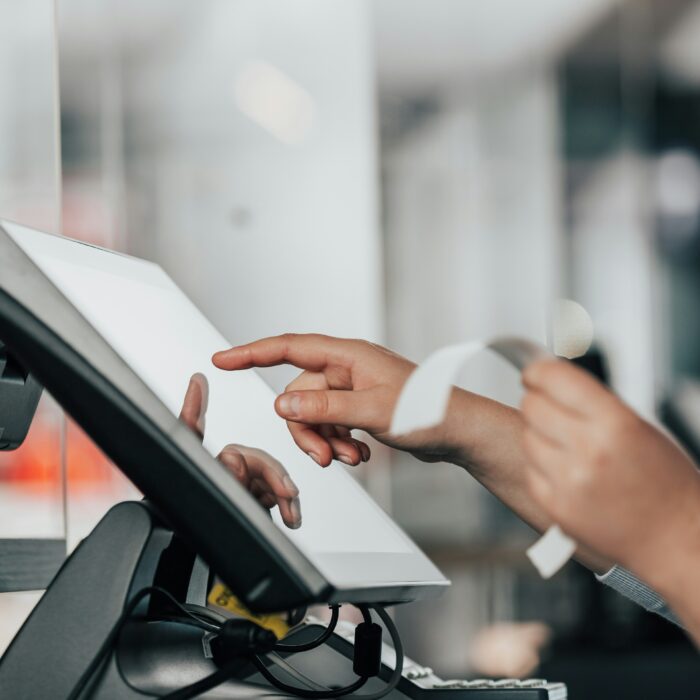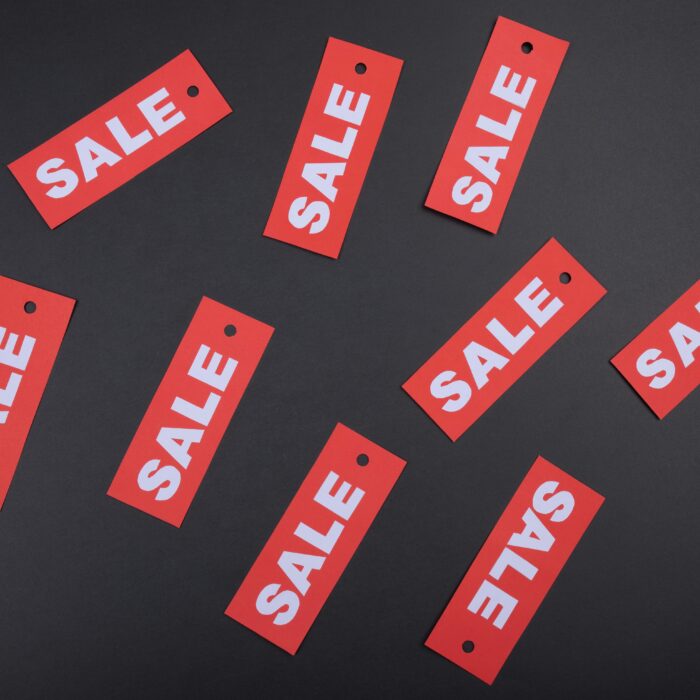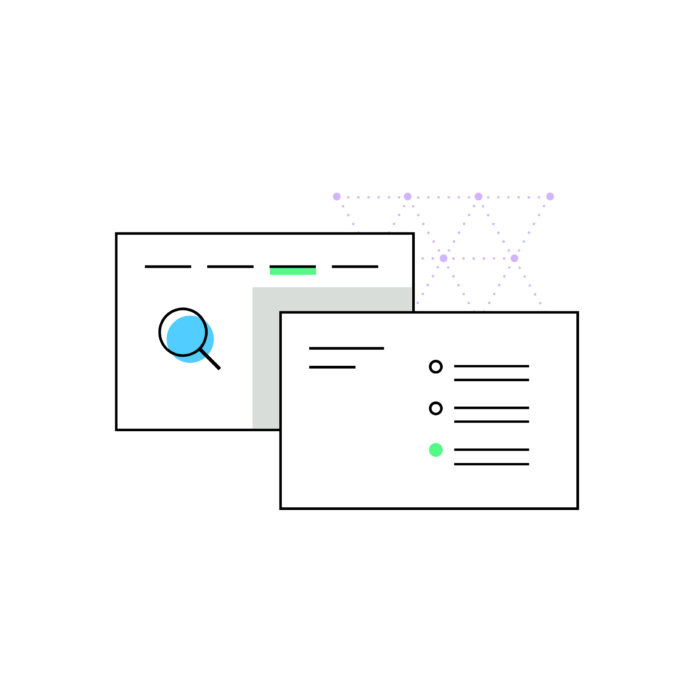Gearing up for growth: Your essential e-commerce playbook for the holiday shopping season
by August 20, 2025
The holiday shopping season is no longer just a sprint; it’s a marathon in a constantly evolving retail landscape. With trends like Buy Now, Pay Later (BNPL) growing and overall online sales showing a 8.37% year-over-year increase from 2024, being prepared is more critical than ever. The most successful retailers are those who plan ahead, embracing new technology and strategies to meet their customers’ changing expectations.
This playbook will guide you through the latest trends and essential strategies in customer experience, marketing, and operational readiness—including the crucial, and often complex, world of sales tax compliance—to ensure you’re not just ready for the rush, but primed for growth.
Modernize the customer experience from online shopping to unboxing
The modern customer journey is no longer a straightforward path but a dynamic experience, constantly moving between online and in-person experiences. Customers might discover a product on social media, research it on a brand’s website, then visit a physical store to see it in person before making an online purchase.
The retailer’s goal is to ensure this multi-channel journey is as seamless and enjoyable as possible. This includes eliminating friction points at every touchpoint, whether a customer is interacting with your brand on a computer, phone, or in a brick-and-mortar location.
A truly seamless experience implies consistent branding, pricing, product availability, and customer service across all channels. When a customer shifts from one channel to another, they should feel like they are continuing a single conversation with your brand, not starting a new one. This integrated experience creates trust, enhances customer satisfaction, and ultimately drives repeat purchases.
Optimized checkout experience
On top of a seamless integrated experience, there is opportunity to optimize the checkout experience for both in-person and online purchases. The rise of “Tap to Pay” on mobile devices allows for quick, contactless checkouts anywhere in a store, busting long lines before they form. Consider how you can use technology to create a stand-out checkout experience. Can customers start a cart online and complete the purchase in-store? Can they use QR codes to access product reviews and information while browsing your aisles?
Nothing kills a sale faster than a clunky checkout process. With 91.5 million Americans expected to use BNPL in 2025, an increase of 5.78% from 2024, it’s clear that customers demand flexibility. Diversify your payment options to include popular BNPL solutions, digital wallets like Apple Pay, Link, and Google Pay, and traditional card payments to reduce friction and lower your cart abandonment rate.
In 2025, customers expect you to know them. Leverage your data to offer personalized product recommendations based on past purchases, send targeted promotions for items they’ve viewed, and create a shopping experience that feels unique to each visitor. This personal touch can be the deciding factor that turns a one-time buyer into a lifelong fan.
Data-driven marketing for a high-impact season
A data-informed marketing strategy allows you to cut through the noise and reach the right customers with the right message.
Not all e-commerce sectors are growing at the same pace. Recent data shows the fashion, food, DIY and hardware industries have taken a lot of the e-commerce market share while household items, beauty and personal care, and furniture are seeing more moderate growth. Analyze your own sales data alongside these broader market trends to tailor your marketing campaigns, ensuring you’re stocking and promoting the products your audience is most excited about.
Go beyond generic discounts by creating a sense of community and urgency with strategic promotions. Offer early-bird specials to your email list, create exclusive deals for your social media followers, and implement a loyalty rewards program that makes customers feel valued. The more you can make your audience feel like insiders, the more engaged they’ll be.
Prepare your back-end operations for an increase in sales
A beautiful storefront and clever marketing mean nothing if your operations can’t handle the holiday rush.
As traffic surges, so does the risk of fraud: November through January are some of the most common months for fraud in the US. A sudden influx of orders can make it difficult to spot suspicious activity, and a single chargeback can wipe out your profit on a sale. Implement a robust fraud prevention strategy that uses machine learning to distinguish between legitimate customers and bad actors without adding unnecessary friction to the checkout process.
Your website and payment processing infrastructure must be able to handle high traffic without compromising speed or reliability. Even a few seconds of extra loading time can lead to a lost sale. Test your systems, talk to your providers, and ensure every part of your technical stack is ready for peak volume.
The strategic advantage of automated sales tax compliance
For many business owners, sales tax is a source of stress and confusion. But with the right approach, it can be a strategic advantage.
If you sell across multiple channels or marketplaces, you know how complex it is to manage sales tax. According to a report from Digital Commerce 360, marketplaces reached roughly $3.8 trillion in global merchandise value in 2024.
Many multi-channel retailers still rely on manual processes to track different tax rates, rules, and filing deadlines, a method that is both time-consuming and prone to error.
Implementing an automated sales tax solution is about more than just avoiding penalties and audits; it’s about freeing up your time to focus on what you do best–growing your business. The right sales tax software will:
- Accurately calculate the precise amount of sales tax in real-time at checkout, no matter where your customer is located.
- Monitor your sales against state nexus thresholds to tell you exactly where and when you need to register and collect.
- Simplify filing and remittance by automatically preparing and submitting your returns.
- Integrate seamlessly with your e-commerce platform and other sales channels for a unified view of your tax obligations.
Sales tax nexus occurs when your business has some kind of connection to a state. All states have a slightly different definition of nexus, but most of the time states consider that a “physical presence” or “economic connection” creates nexus. You only have to charge sales tax in the states in which you have sales tax nexus. There are two types of nexus, physical and economic nexus.
While physical nexus is based on a physical location in a state, either through an office, employees, or tradeshow, economic nexus is based on revenue or transaction thresholds. These thresholds vary by state.
TaxJar is a great fit for new companies looking to streamline their entire compliance process from the very beginning. Our 30-day free trial gives you the opportunity to see how TaxJar can support your compliance goals and allow your company to grow without sales tax management slowing you down. If you’d like to learn more, schedule time to chat with our sales team today.
Your roadmap to a successful season
The holiday shopping season is a massive growth opportunity for retailers. By modernizing your customer experience, leveraging data in your marketing, bulletproofing your operations, and automating your sales tax compliance, you can turn this hectic period into your most profitable one yet.
Don’t wait until the last minute. Start implementing these strategies today to ensure a smooth and successful holiday season.








